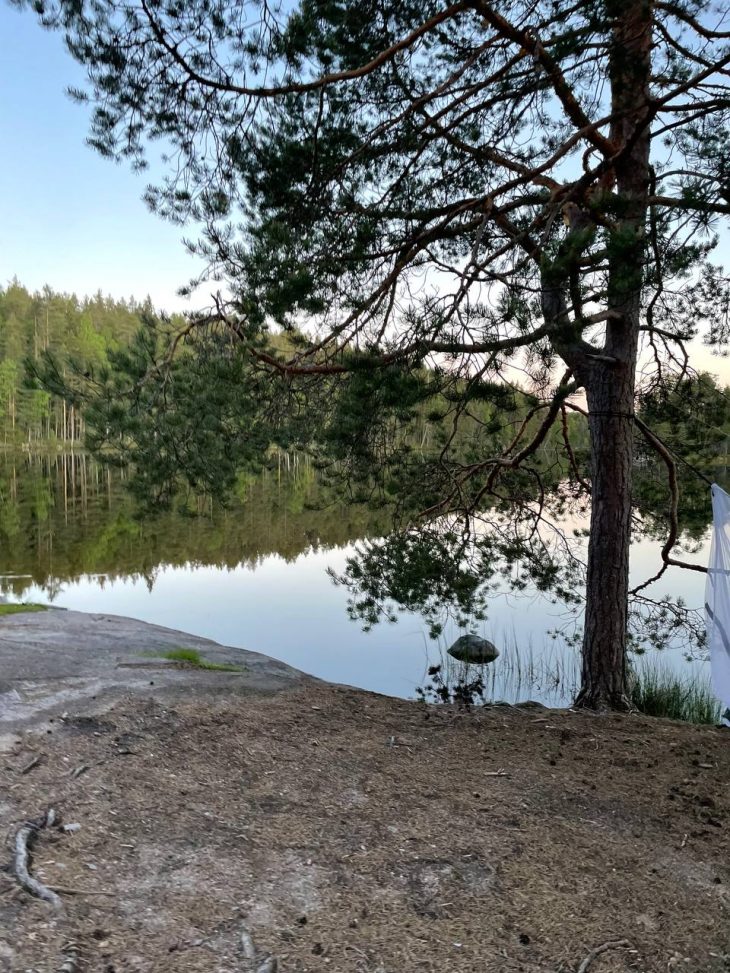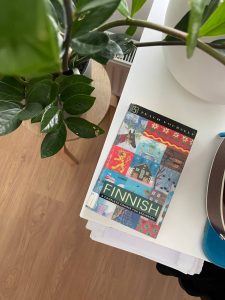
Studying Finnish 8 years too late. My best practices that helped pass YKI test.
Learning Finnish alongside pursuing a full-time degree may appear daunting, but I’ve been there. My journey began in Finland in 2016, initially filled with enthusiasm for learning Finnish. However, after six months, other academic responsibilities took precedence, fuelled by the belief that Finland values skilled professionals irrespective of their language proficiency. Fortune smiled on me as I started my career at XAMK, while engaging in various internships and consulting projects, including work with startups and the World Bank, where Finnish language skills were, as you might guess, not a prerequisite. Nevertheless, the desire for Finnish citizenship and also willingness to grow further and be treated as equal, in terms of experience and expertise, brought me back to Suomen Mestari (spoiler, you only need 2 books to pass YKI test, really).

Before all, here are my top tips: When you get too stuck in A1—like “I am a student,” “I work here,” and “I like dancing”—you are on the level of a 2-year-old baby, and it’s super annoying. So, I’d recommend reflecting on which age level you find yourself now if you were a Finnish baby and try getting to age 10 as soon as possible using the tips below. Then, language learning will become fun:
Immersive Experiences: Spending some time in Mikkeli with colleagues allowed me to practice Finnish in a natural setting, significantly boosting my speaking skills. Also, on Fridays, we play this game where we try to guess the song playing on the radio that day. It pushed me to listen to both old and new songs, helping me to immerse into the culture and language.
Prepared Topics: Having specific topics like climate change or saunas ready for discussion helped me immensely, especially in formal situations like the YKI test. In the YKI test, they asked me about waste in the forest, but my expertise in Finnish is about climate change. So, I said that waste management is important but fighting climate change is even more important. Just have your go-to topics!
Supportive Tutoring: The value of a good tutor cannot be overstated. The topics we covered were directly relevant to my YKI test, which made preparation more straightforward. So, if group learning does not work, maybe invest in private classes where you will get specific vocabulary and topics for the YKI test, not just general Finnish learning as you might want to focus on the YKI only.
Listening: Explore the “Opi suomea” podcast, “Selkouutiset” for simplified news, and Maaritin virhe reading walkthorough on YouTube for engaging educational content.
Watching: Finnish series like “Ivalo” and “Sorjonen” offer captivating ways to immerse yourself in the language.
Reading: “Samalla kartalla” and “Selkouutiset” provide accessible reading material for learners.
YKI Guide: A crucial resource for understanding the test structure and expectations. Here is the website: https://ykipass.fi/
YKI Test Registration: For those looking into the YKI, the Finnish language proficiency test is essential for citizenship applications, and securing a test slot can be surprisingly competitive. Here are some strategies that proved effective:
- Registration opens precisely at 10:00 AM, and available slots fill up quickly, often within minutes.
- Accessing the registration site on a laptop or desktop allows for faster refreshes, giving you a slight edge over mobile users.
- Have a list of preferred test locations ready. If possible, coordinate with friends who can attempt to register you at alternate sites.
- While email registration is possible, using bank identification for the process is faster and more reliable. If an email confirmation doesn’t arrive within a minute, switch to bank identification without delay not to miss a spot!
Looking back, there were several areas where my approach to learning Finnish could have been more effective:
- I regret not reading enough unadapted Finnish texts. I almost cried in the real exam when I saw overwhelming amount of Finnish that I have never read in my life.
- Focusing on practical language usage, like reading store announcements and memorizing numbers, would have been beneficial, as I still sometimes mix 8 and 9 in Finnish…
- Learning a broader array of verbs for everyday actions (e.g., to deliver, to bring) would have made me more confident in using them.

The journey to learn Finnish and integrate into the culture, was not easy. Here is me, happily crying once I got my B1 certificate.
Remember, if Finnish seems daunting, the right motivation and instructor can transform learning into an enjoyable experience, ultimately worthwhile as it enabled me to confidently engage in karaoke with my boss! My journey to achieving B1 level, as certified by my YKI test results, involved a year of passive effort followed by six months of dedicated study.
Best of luck to all aspiring Finnish learners. The journey will be challenging but incredibly rewarding.
- 5 great opportunities to apply now and enjoy in 2025 - 13th December 2024
- 10 Must-Have AI Tools for Students to Make Studying Easier - 5th December 2024
- What happened in Baku - 29th November 2024
